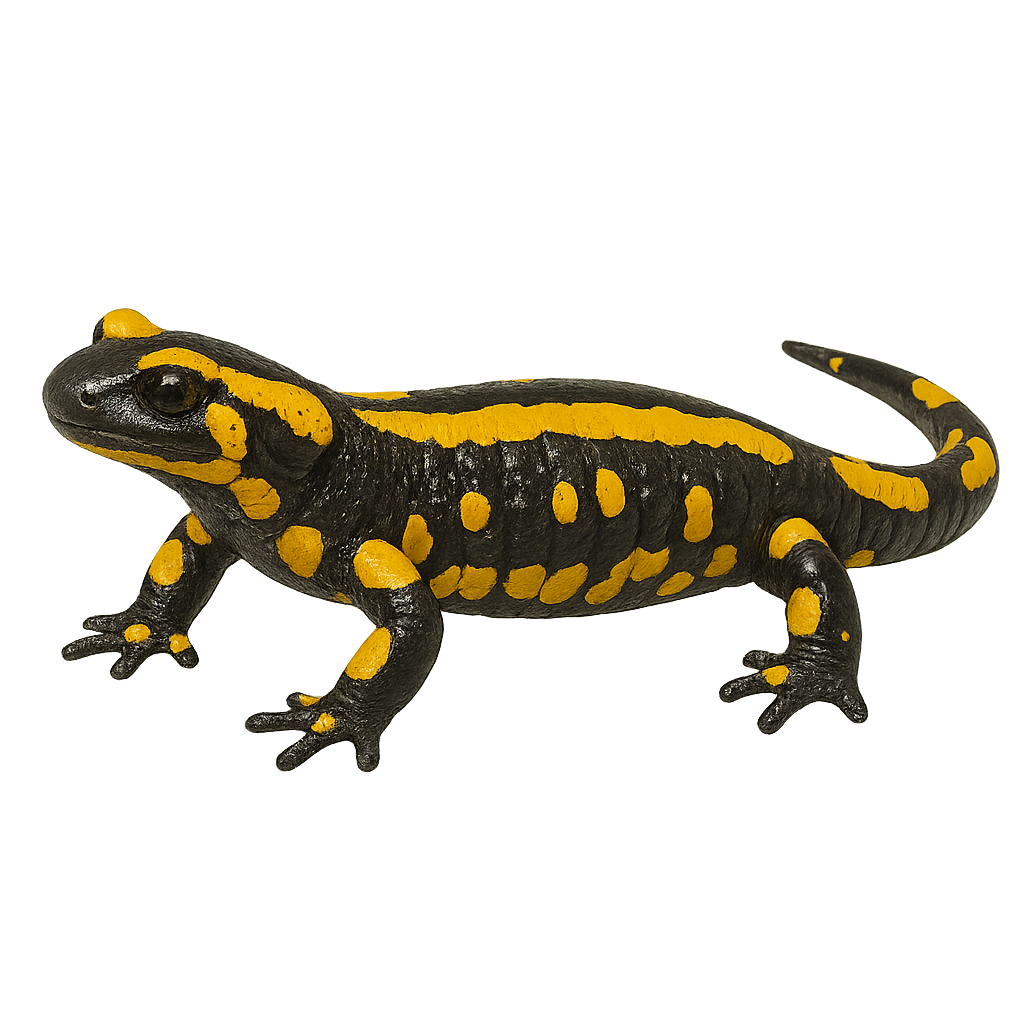Your wildlife photography guide.
Explore the spotted salamander in detail, study its behavior, prepare your shots.
Where to observe and photograph the spotted salamander in the wild
Learn where and when to spot the spotted salamander in the wild, how to identify the species based on distinctive features, and what natural environments it inhabits. The WildlifePhotographer app offers tailored photography tips that reflect the spotted salamander’s behavior, helping you capture better wildlife images. Explore the full species profile for key information including description, habitat, active periods, and approach techniques.
Spotted Salamander
Scientific name: Salamandra salamandra

IUCN Status: Least Concern
Family: SALAMANDRIDAE
Group: Amphibians
Sensitivity to human approach: Shy
Minimum approach distance: 10 m
Reproduction period: May
Incubation: 01.12-28.02
Births: May
Habitat:
Forests, wetlands
Activity period :
Mainly active at night, generally discreet during the day.
Identification and description:
The Spotted Salamander is an amphibian primarily found in forests and wetlands across Europe, particularly in France, Spain, and Germany. It typically measures between 15 and 25 cm in length, although some specimens can reach up to 30 cm. Its body is black with bright yellow spots, making it easily identifiable. The Spotted Salamander is a nocturnal and terrestrial animal, hiding during the day under rocks or in holes in the ground to protect itself from the heat. It is carnivorous and feeds primarily on insects, worms, small crustaceans, and other invertebrates. While it remains relatively abundant in certain regions, this species is threatened by water pollution, habitat destruction, and climate change.
Recommended lens:
Macro – adjust based on distance, desired framing (portrait or habitat), and approach conditions.
Photography tips:
Use a macro lens to capture the details of the salamander's body, particularly its characteristic yellow spots on a black background.
Photograph early in the morning or after rain, times when the salamander is often active and moving in search of prey, such as insects or worms.
Look for it in humid forests, undergrowth, and near streams, where it prefers cool and shaded areas.
Be discreet and respectful. Do not disturb the animal and avoid handling it. Flash photography can be disturbing, so it is best to photograph without using it.
The Spotted Salamander is a protected species in many regions due to the degradation of its natural habitat and its sensitivity to pollutants. It is essential to respect its environment and minimize disturbances.
The WildlifePhotographer App is coming soon!
Be the first to explore the best nature spots, track rutting seasons, log your observations, and observe more wildlife.
Already 1 432 wildlife lovers subscribed worldwide

